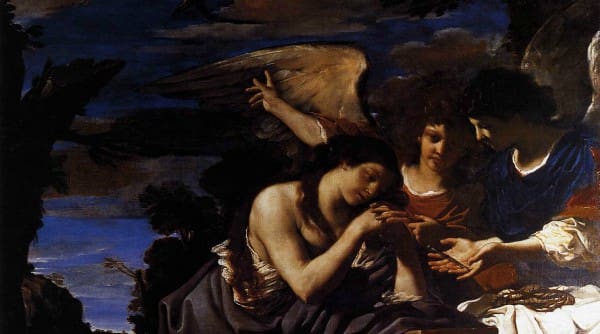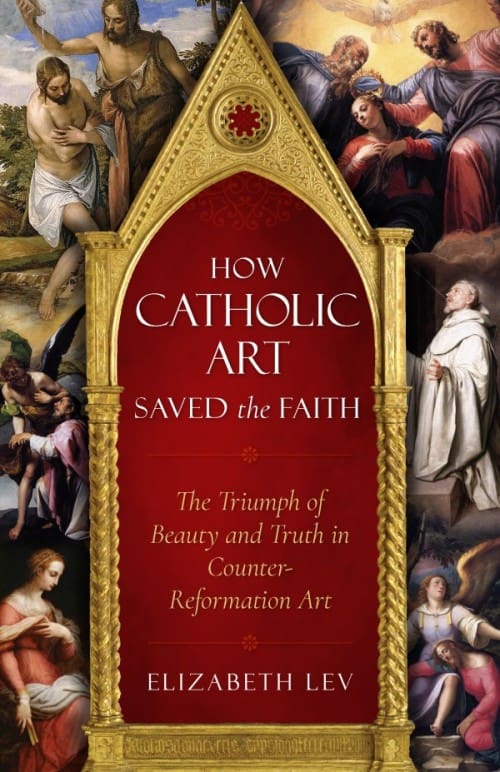The Reformers stigmatized confession with words like “impious,” “tyranny,” “pestilence,” “perversion,” “monstrosity,” and “butchery.” With such brutal epithets, how could the church convince the faithful of the inherent beauty of coming clean with the Lord and being renewed by His forgiveness?
Artists had always loved to produce depictions of Mary Magdalene. Not only was this woman the “Apostle to the Apostles,” but she was also the ultimate model of repentance. In his Homily 33 on the Gospels, Pope Gregory conflated Mary Magdalene with several nameless women of the New Testament, including the prostitute who washed Christ’s feet with her tears. This theological giant declared:
“Whenever I ponder the penitential spirit of Mary Magdalene, I feel more like weeping than like speaking. The tears of this sinful woman will soften even a heart of stone toward the idea of doing penance. Having reflected on what she had done, she did not wish nor set bounds to what she should do.”
Far from shaming this great saint, as modern interpreters claim, he held Mary Magdalene up to the beacon of penance for men and women alike.
Much like St. Jerome for prelates, Mary Magdalene never went outside of style; she just changed costumes to suit the evangelical needs of the Church. A richly robed noblewoman in the Middle Ages, she became the passionate mourner under the Cross in the Renaissance and then returned in the Catholic Restoration as the glamorous model for penitence.
In this era, Mary Magdalene attracted many famous followers, including the noblewoman-turned-saint Maria Maddalena de’ Pazzi and the extraordinary poetess Vittoria Colonna, so admired by Michelangelo. Colonna not only wrote a series of sonnets to the saint, but she also acquired Titian’s startlingly lovely Penitent Magdalene.
Mary Magdalene reigned supreme in post-Reformation iconography, painted by Carracci, Caravaggio, and most every other major artist. No longer portrayed as an elegant aristocrat or an emaciated zealot, she became a sensuous figure, whose evident beauty and attraction were no longer directed to the things of this world but were employed to inspire the faithful to be the wonders of Heaven. Nor was she a dumpy creature, swathed in concealing robes with no attractions to conceal – the Magdalene was beautiful, but had dedicated her beauty to the service of God.
A Model of Self-Denial
Of the many Mary Magdalenes Guido Reni painted, the version for Roman cardinal Antonio Santacroce was the most successful. The saint, wrapped in heavy draperies, reflects a sensuous warmth in her soft limbs, but instead of leading the viewer to impure thoughts, she redirects his gaze to heaven. The lower half of her body is enclosed by the gray stone of her cape, like a self-designated tomb. Her robe, instead of the useful fiery red, has been dulled with a cool blue to mauve, symbolizing through color the tampering of human passions. Roots lie by her side, indicative of her penitential fasts, while the cross and skull allude to her self-mortification, following the example of Christ. The upper part of her body appears warmer as her golden tresses part to reveal her luminous chest; Mary bares her heart to the Lord and, in doing so, becomes a beautiful depiction of the Sacrament of Confession. Angels welcome and comfort her, opening the path to Heaven for this saint who makes penitence chic. Much as movie stars and models become advertisements for products of superficial beauty, Mary Magdalene became a poster child for an interior cosmetology.
+
This article is adapted from a chapter in How Catholic Art Saved the Faith by Elizabeth Lev which is available from Sophia Institute Press.
Art for this post on Mary Magdalene: Cover used with permission; Featured image used with permission of the Web Gallery of Art.
To read more about the saints, click HERE.






